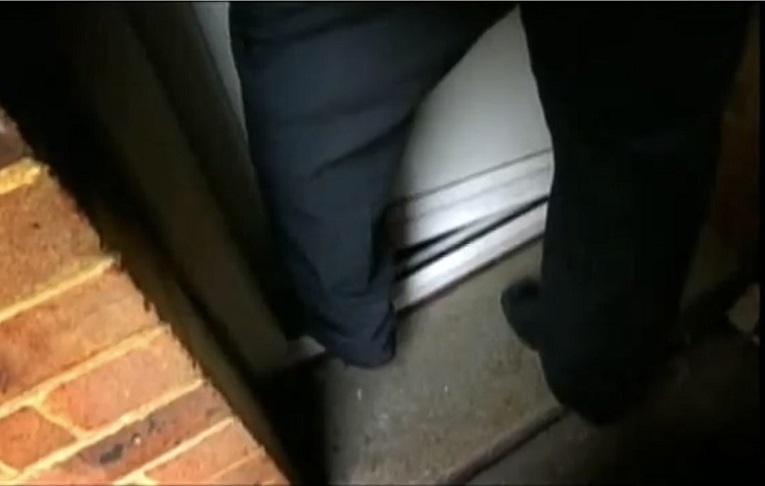Dealing with Bailiffs
Illegal Bailiff Entry: Act Now to Protect Your Rights
Key Takeaways
- Placing a boot in the door is unlawful and does not amount to peaceful entry under Schedule 12 of the Tribunals, Courts and Enforcement Act 2007
- Paragraph 24(2) prohibits bailiffs from using force against persons, which includes wedging a foot in the doorway
- Enforcement is invalid if entry is achieved by force, and any goods taken or money collected must be returned
- Debtors may sue for damages under paragraph 66 and seek return of goods or compensation for loss suffered
- Non-debtors can claim under the Torts (Interference with Goods) Act 1977 if their property is taken
- Photographic or video evidence strengthens your case, and body-worn camera footage can be requested under the Data Protection Act 2018
- Criminal offences may arise if injury is caused, including assault under the Offences Against the Person Act 1861
- The practice is condemned by case law, including Vaughan v McKenzie [1969] and Rai & Rai v Birmingham City Council [1993]
Bailiff Jammed His Boot into Your Door: The Threshold Maneuver and the Law

The action of a bailiff jamming his foot into a door to prevent it from closing, often referred to colloquially as the "threshold manoeuvre," is both unlawful and contrary to the governing statutory framework. It is a practice rooted in historical abuse and judicial condemnation, and any enforcement proceeding based upon such an act is vitiated from the outset. The law is explicit: where the bailiff acts contrary to the prescribed limits of his authority, the enforcement is rendered irregular and, in certain instances, illegal.
The legal framework under schedule 12
Schedule 12 of the Tribunals, Courts and Enforcement Act 2007 governs the powers of enforcement agents. Paragraph 18(1)(a) of that Schedule expressly prohibits the use of force to effect entry when enforcing a traffic contravention debt, a common species of civil liability subject to summary enforcement. Paragraph 24(2) is yet more categorical: the use of force against persons is prohibited except in so far as permitted by regulations. No such regulation authorises a bailiff to use bodily pressure or positioning, such as wedging a foot into the aperture of a door, to overcome a householder’s non-consent.
Unlawful entry and trespass ab initio
That threshold act is, in legal terms, a trespass ab initio. Entry into residential premises without consent is only lawful when effected peaceably, a doctrine rooted in centuries of jurisprudence. The seminal case of Vaughan v McKenzie [1969] 1 QB 557 confirms that even partial entry or force sufficient to defeat a householder’s express refusal renders the bailiff a trespasser. In that case, the court upheld the right of the householder to resist and noted that the use of force by the bailiff, including wedging his foot into the door, was unlawful. Curlewis v Laurie (1848) and Rai & Rai v Birmingham City Council [1993] reinforce this position, the latter specifically ruling that forced entry by placing a foot in the doorway invalidates the enforcement that follows.
Collapse of peaceful entry argument
Once a bailiff’s foot is across the threshold and force is applied, the legal fiction of "peaceable entry" collapses. Bailiffs often argue that the foot-in-door tactic secures lawful entry, but this is legally unsustainable. The use of body weight or physical positioning to deny the householder the right to shut their door is not consent, nor is it an invitation to enter. Rather, it is the use of physical force against a person, prohibited under paragraph 24(2) of Schedule 12.
Remedies available under paragraph 66
The remedy for this breach is found in paragraph 66 of the same Schedule. Where an enforcement agent breaches any provision, including the limits on force or entry, the debtor may bring proceedings for redress. The court may order the return of goods seized, or award damages in respect of losses incurred. Proceedings may be brought in either the High Court or County Court, as appropriate. The statutory right of action under paragraph 66(3) is unqualified once a breach is proven.
Invalidity of enforcement and recovery of goods
Where goods have been taken following such an entry, the debtor is entitled to claim the return of the goods or compensation for their value, along with any consequential loss. The unlawful entry contaminates all subsequent enforcement action, and renders the entire levy invalid. The same applies to monies taken by the enforcement agent following an invalid entry.
Remedies for third parties
For non-debtors whose goods or money have been taken, recourse lies under the Torts (Interference with Goods) Act 1977. Section 3 provides a cause of action for wrongful interference, while section 4 permits applications to the court for the return of those goods. Where money is taken, claims in conversion or unjust enrichment may be available.
Evidence and body-worn camera footage
Evidence of the threshold breach is critical. A photograph or video showing the bailiff's boot lodged in the door aperture can be determinative. Under section 45 of the Data Protection Act 2018, a person may request a copy of the bailiff’s body-worn video footage. If the enforcement firm fails to provide it or states that it is no longer available, a complaint may be made to the Information Commissioner’s Office pursuant to section 165 of that Act. The absence of footage, when footage should have been retained, may support an adverse inference and strengthen the debtor’s claim.
Criminal liability for use of force
In some cases, the use of force by the bailiff may also constitute an offence under section 39 of the Criminal Justice Act 1988 (common assault), or where injury results, under section 47 of the Offences Against the Person Act 1861 (assault occasioning actual bodily harm). In such instances, the police may become involved, and a criminal complaint may be warranted.
Civil procedure and personal injury claims
Where the breach is particularly egregious, the debtor may consider an application under Civil Procedure Rule 84.13 for a declaration that the enforcement was unlawful, alongside a claim for personal injury, if applicable. This is particularly so where the householder suffers physical harm, as in the instance involving the bailiff from Marston Holdings Limited, where a woman sustained a fractured foot when the bailiff forced the door open with his boot. The consequence was not only a civil claim in damages but a practical repudiation of the threshold tactic by insurers, who thereafter refused to indemnify bailiffs employing such methods.
Conclusion and action
The position in law is therefore settled: placing a boot in a door aperture to prevent its closure is not peaceful entry, but the use of force. It is a breach of statutory duty, and every act that follows such entry is vitiated by illegality. The householder may bring a claim for return of goods, recovery of money, or damages. The bailiff’s principal or the enforcement authority may also be jointly liable.
Any person faced with this unlawful behaviour should consider initiating civil proceedings for trespass and statutory breach, supported by witness evidence, video footage, and any related correspondence. In doing so, they not only enforce their own rights, but also play a part in curbing an abusive and discredited practice. The legal mechanisms are in place. What remains is their diligent and fearless application.
Remedies
- Claim return of goods or money under paragraph 66 of Schedule 12 of the Tribunals, Courts and Enforcement Act 2007
- Bring a damages claim in the County Court or High Court for losses suffered as a result of unlawful entry
- Apply for a declaration that the enforcement was unlawful
- Issue a personal injury claim if physical harm occurred, such as a door forcibly opened causing injury
- Make a third-party claim under sections 3 and 4 of the Torts (Interference with Goods) Act 1977 for wrongful seizure of property
- Request body-worn video footage under Civil Procdure Rule 31.17
- Report criminal conduct such as assault or injury to the police under the Criminal Justice Act 1988 and Offences Against the Person Act 1861
If a bailiff forced entry by jamming their boot in your door, the enforcement is likely unlawful and any goods taken or money collected may be recoverable. You should gather evidence, such as photos or video, and request bodycam footage. Then consider making a formal complaint and bringing a claim in the County Court for damages and return of goods. Legal advice should be sought promptly to preserve your position and ensure the strongest possible case is presented to the court.
